Prathamastami is a traditional ritual among the Oriya community. It is mainly held in Odisha for the life and prosperity of the eldest child of the family. He or she is offered a lighted lamp by the senior female relatives followed by elaborate rituals during which the mantras are recited. Prathamastami is celebrated on the Ashtami tithi of the month of Margashirsha occurring after the eight-day of Kartik Purnima. This day is also known as Saubhagini Ashtami, KaalBhairav Ashtami, and Paap-nashini Ashtami. The main delicacy of the day is HaldiPitha or EnduriPitha. (1, 2, 3, 4)
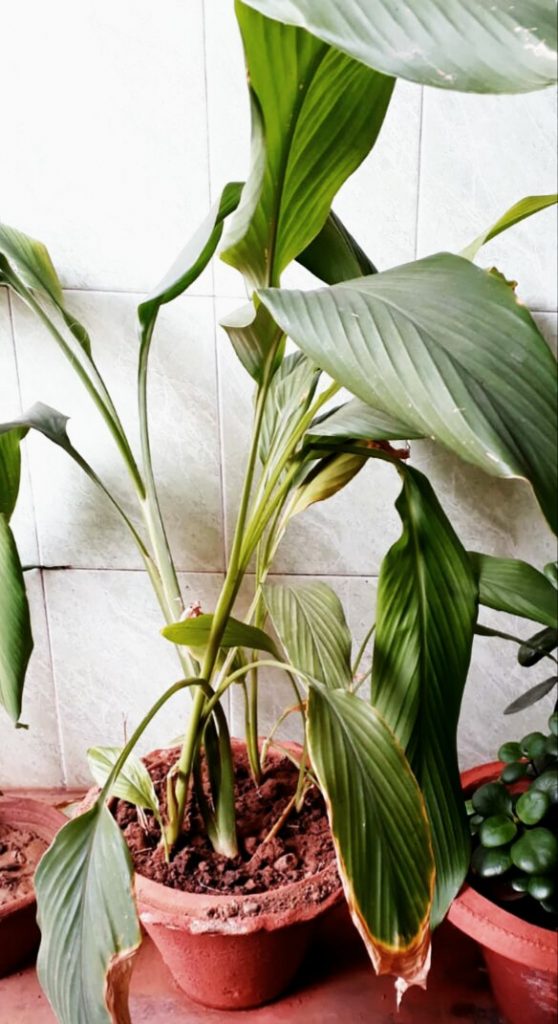
Leaves of Curcuma species are a waste product during postharvest operations. Traditionally, the leaves of C. longa used in culinary preparation are aromatic and contain essential oil. Composition and Antimicrobial Activity of the Essential Oil from Leaves of Curcuma longa L. Kasur Variety (5). For the preparation of Haldipitha, turmeric leaves are used to wrap the pita. Since the leaves used are freshly picked, turmeric leaves impart a distinctive flavor to the pitha. (6)
Frankly speaking, being a Bengali woman, I was not aware of the uses of turmeric leaves in cooking. But whenever I shifted to Rourkela, Orissa, I am surprised to know that turmeric leaf is commonly used to wrap foods. Later, I also tried this recipe, and all my family members relish this pitha. Thanks to my neighbor cum didi Anima Pradhan and Madhulita Das, who actually made me aware of this recipe. You can also try this recipe any day, believe me, all of your family members will be happy after tasting this recipe.
Ingredients used for making Haldipitha or Enduripitha

| Ingredients used | Measurement |
| Rice | 1 cup |
| Urd dal or Bidi dal or Biuli dal | 1 cup |
| Whole milk | 500ml (half litre) |
| Coconut (grated) | 1 medium size |
| Jaggery | 1/2 cup |
| Lemon | 1 small |
| Black salt (a pinch) | ½ teaspoon |
| Cardamom powder | 1 teaspoon |
| Ghee | 1 teaspoon |
| Turmeric leaves | 5 fresh leaves |
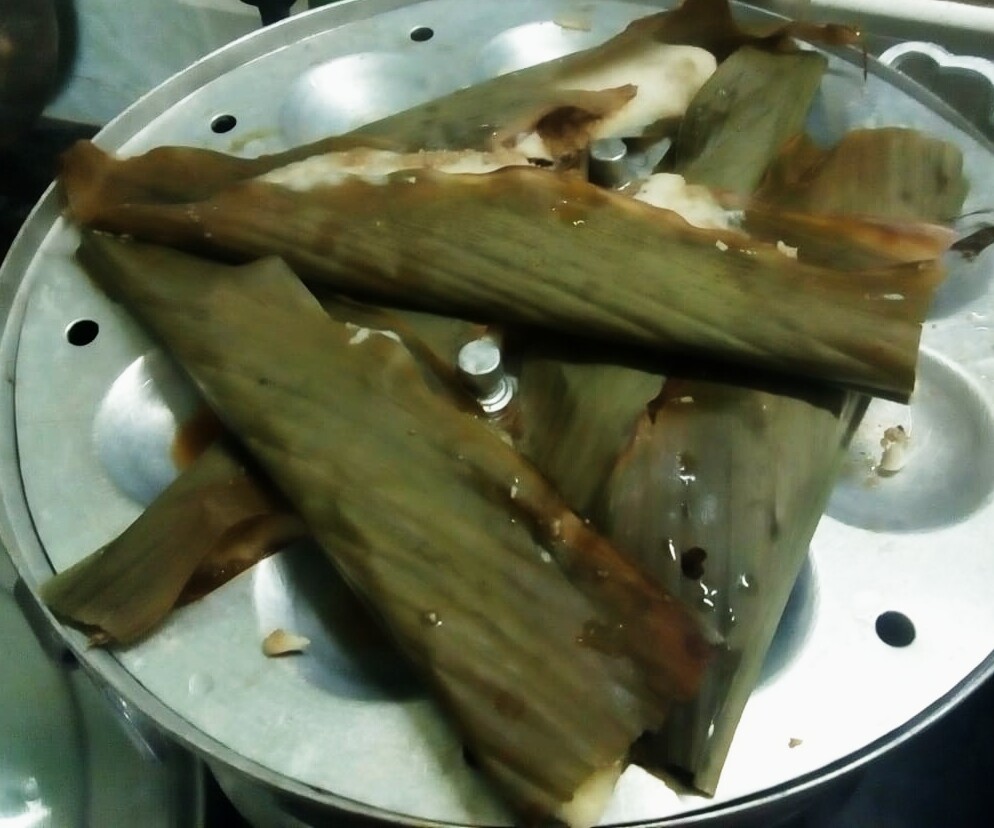
How to prepare Haldipitha or Enduripitha
1. Soak the urad dal & rice separately in sufficient amounts of water. Kept overnight.
2. Grind the soaked dal and rice into a smooth, thick paste. It is better not to add water during grinding. But if needed use only a little water during grinding.
3. Mix both the rice and dal together, mix very well, and keep aside the mixture for another 8-10 hours.
4. After 8-10 hours of fermentation, add the required amount of salt and mix well. Now your batter is ready.
5. For stuffing, grate a medium size coconut.
6. Boil 500 ml of fresh milk, add lemon juice, and make channa (cottage cheese).
7. Strain the cottage cheese to separate it from whey water, using a white clean cotton cloth.
8. Heat a Kadai or saucepan, melt the jaggery and add the grated coconut and cook the mixture for 7-8 minutes at low flames. Stir occasionally to avoid any burnt flavor.
9. Add fresh cottage cheese (channa) and cook for another 5 minutes.
10. Add a little black pepper powder, cardamom powder, and sprinkle one teaspoon of ghee. Mix well and cook for another 2 minutes, switch off the gas. Now your stuffing is ready.
11. Take 5 fresh haludpata or haldipatra or turmeric leaves. Wash them with running tap water.
12. Cut each leaf into 2 parts, and discard the narrow end of the leaves.
13. On a fresh leaf, spread 1 tablespoon of thick batter, add 1 tablespoon of coconut stuffing, cover with another leaf and close the side of leaves using toothpicks.
14. Now boil water in an idli maker, add all the discarded Haldi leaves and a little salt, and keep the Haldipitha over it, cover it, and steam the pitha for 20 minutes.
15. Now your Haldipitha is ready, serve fresh Haldipitha to your friends and family members.
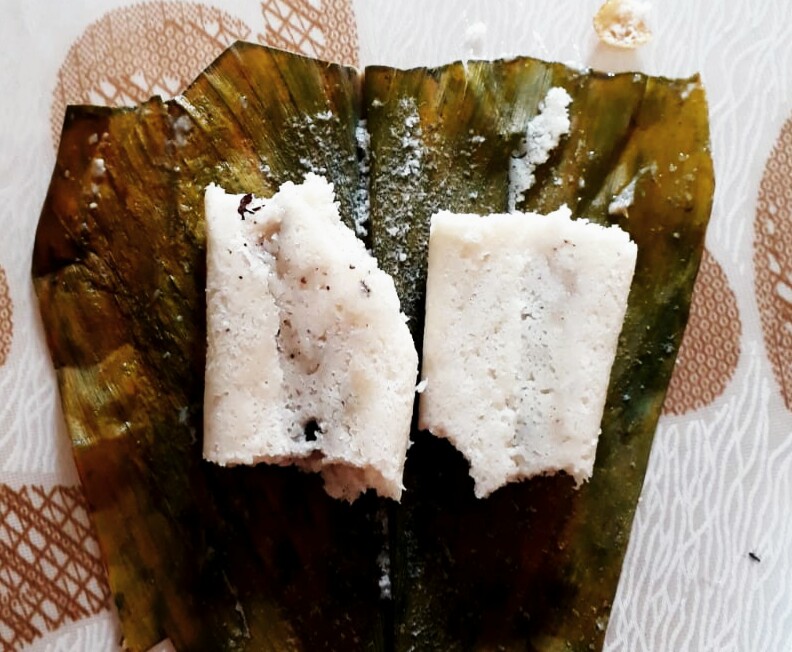
Precautions to be taken while making Haldipitha or Enduripitha
· Do not use extra water during grinding. You need a thick batter. If you use more water a thin paste is obtained and you can’t prepare the pitha properly.
· Don’t add salt during soaking or grinding or fermentation. The addition of salt hampers proper fermentation.
· You should use a sufficient amount of water during soaking. Otherwise, the rice and/ or dal is not increased in volume and you can prepare a soft, thick, smooth paste out of it.
· Leave for fermentation at least for 8 hours.
How to Serve Haldipitha or Enduripitha
You can take it as it is. Otherwise, you can serve it along with any sabzi (veg curry), any non-vegetarian item, or even with kheer/payesh.
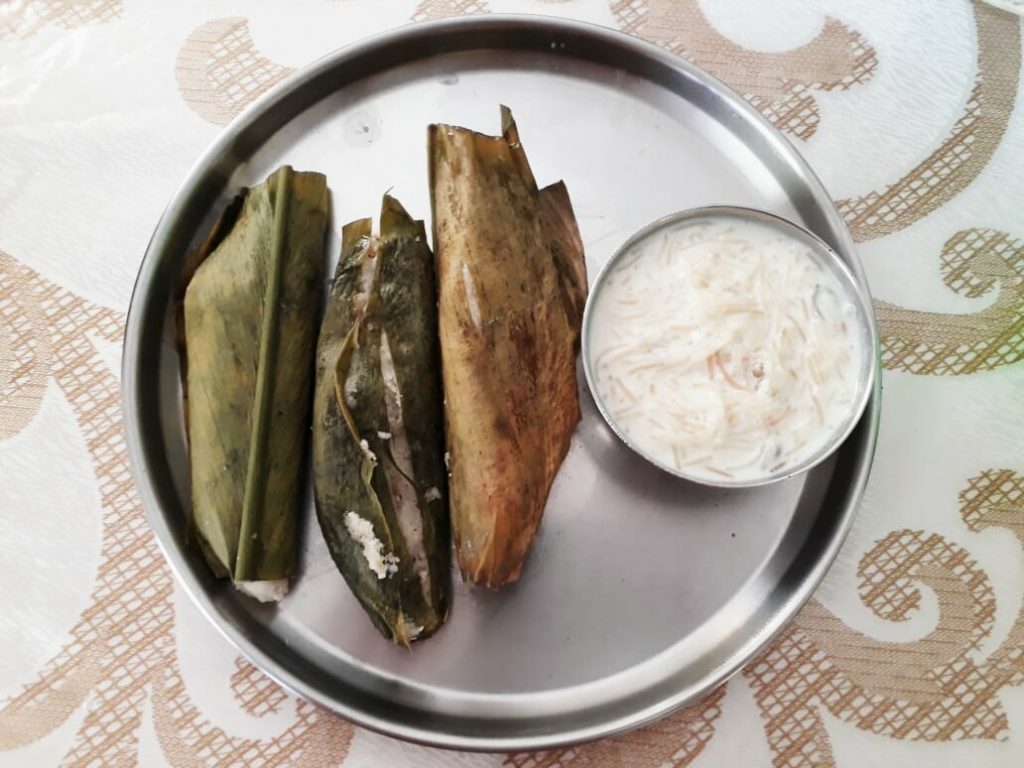
Nutritive Value of HaldiPitha or Enduripitha
Haldipitha is an energy-rich, cereal-pulse-based nutritious snack item. It is a full probiotic, gut-friendly microorganism. Anyone can take this pitha.
Nutritive Values per 100g of HaldiPitha
| Nutrients | Amounts |
| Protein(g) | 11 |
| Fat (g) | 12.92 |
| Carbohydrate (g) | 51.952 |
| Crude Fibre (g) | 1.24 |
| Energy (Kcal) | 366.6 |
| Calcium (mg) | 77.8 |
| Phosphorus (mg) | 205.75 |
| Iron (mg) | 1.91 |

Health benefits of HaldiPitha or Enduripitha
- Haldipitha is a traditional healthy Oriya recipe.
- It is a combination of cereal and pulse, supplying a good amount of protein.
- It is a vegetarian dish providing all the nutrients.
- It is a probiotic food, good for our gut health.
- This tasty recipe is easy to digest.
- Improves the general health
- This recipe is rich in probiotics, minerals and vitamins.
Bottom Line
Haldipitha is a tasteful, healthy food. It is rich in gut-friendly beneficial organisms. This recipe is blessed with the medicinal values of Haldipatra (turmeric leaves). Indian traditional sweets are best when made at home at the right time with loads of love and care. Try this out.

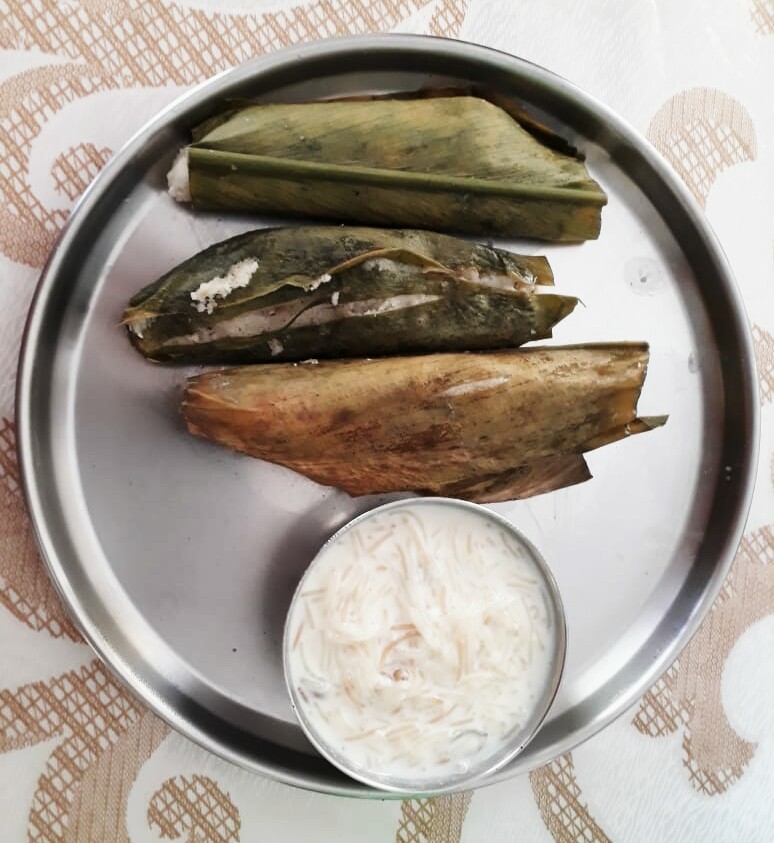
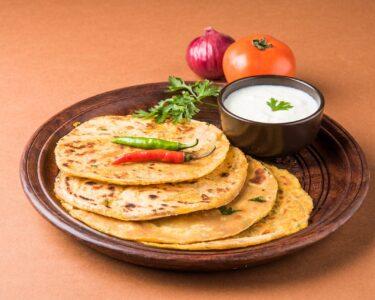
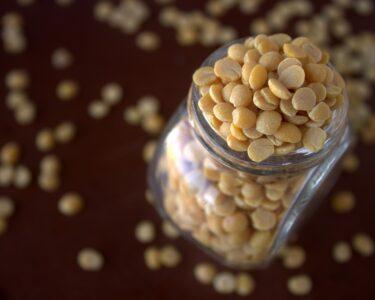

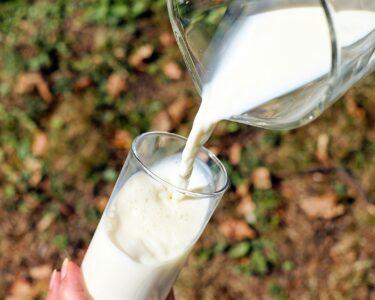
1 Comment